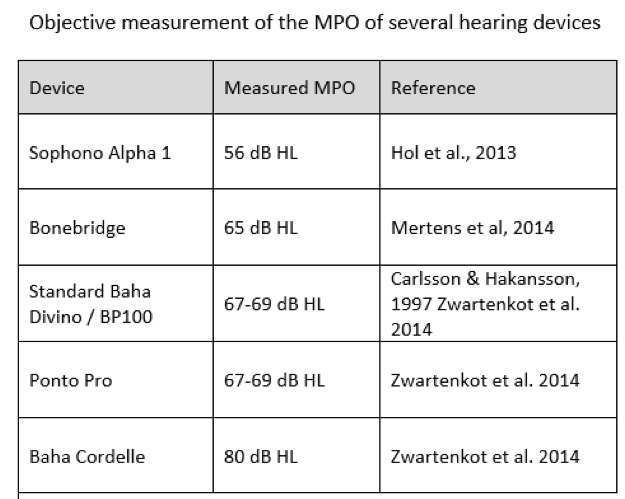Question
Will patients with a minimal conductive hearing loss benefit from Oticon Medical's SuperPower device?
Answer
Yes. The SuperPower device has a high maximum output, which means better utilization of that patient's dynamic range. The gain is prescribed according to the hearing loss via in-situ bone conduction measures. You do not have to worry about overamplifying or sound being too loud for the user, even for those with a minimal degree of hearing loss. The MFO will be below the patient's LDL.
When we are talking about bone anchored systems, we are talking about max force output as opposed to the power of output as used with traditional air conduction hearing aids. Bone-anchored devices do not have the ability to make incoming sounds too loud for our users. Even with SuperPower bone anchored systems, the MFO is well below the user's LDL. Therefore by providing a patient with more output, they are provided with a wider dynamic range at no risk of causing damage with over amplifying. Every bone anchored system patient can benefit from these higher MFOs, such as in the Ponto 3 SuperPower.
With conventional air conduction hearing aids, SuperPower is associated with big hearing losses that require a lot of amplification, and therefore a high maximum power output (MPO). Subsequently, the software provides a warning that you must take care of fitting these instruments because it's possible to damage hearing with too loud of an air conduction stimulus. This does not apply with bone-anchored hearing aid systems.
Bone-anchored systems have a certain maximum output, such that loud sounds can only be reproduced to a certain level per device. Figure 1 shows a comparison of some historical devices and their output limitations. If you take a look at this chart, the loudest sound that the device can produce is below the patient's LDL, therefore their dynamic range is compressed due to the limits of the BAHS device's maximum output. Our focus is on making each device more powerful, thereby increasing the maximum output.

Figure 1. Objective measurement of the MPO of several hearing devices.
There is no risk of overfitting or overamplifying by using bone anchored powered devices well below the LDL. Gain is prescribed to the hearing loss and can be set low enough for even minimal conductive hearing losses. The patient is still able to increase the volume by 10 dB.
This Ask the Expert is an excerpt from the CE Course, Power for Everyone!

